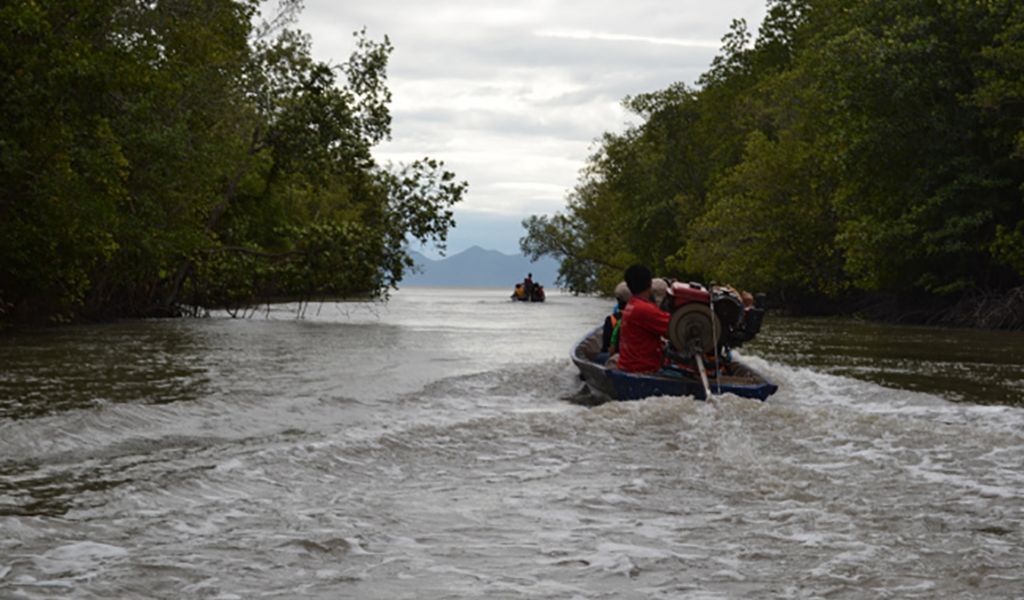Local people need a good forest

Dr. Tint Lwin Thaung, Executive Director of RECOFTC, discusses one of the key challenges in community forestry. To meet expectations about the role of community forestry in poverty reduction, we must promote community forestry models that aim to move beyond subsistence scale. The size and quality of forest land actively managed by local people is crucial.
Today, 21 March, is the International Day of Forests. The Day celebrates and raises awareness of the importance of forests. But when we say forests, what kind of forests are we talking about, and to whom are they important?
Here at RECOFTC, we know that an effective approach for improving forest conservation is strengthening the active control of communities over their forests. A recent RECOFTC report finds that the benefits of community forestry (CF) can be significantly and cost-effectively scaled up if governments increase the area of good quality forests under community management (among other factors)[1]. As an organization with its ‘ear to ground,’ we know that the good quality part of this statement urgently needs to be addressed.
We know that there are frequent complaints about poor quality (in terms of potential for productivity) land given to local people under CF arrangements. This land often consists of degraded forest area, and the local people who depend on these forests are struggling even to obtain minor forest products. Sometimes managing this type of degraded land becomes more of a burden for local people than a benefit, due to threat of fire. While the capacity for natural regeneration of degraded land is possible, time is a key factor for local people who depend on forests to meet their subsistence needs.
The RECOFTC report finds that despite the fact that forest areas under CF management have increased from 150 million ha in 2002 to 180 million ha in 2012 in 14 countries in the region, information such as type of forests, status of regeneration, productivity and ability to support ecological functions and forest production is mostly lacking.
There is much evidence that proves that local people time and again have demonstrated their ability to protect forests and manage production forest more effectively than public agencies. For example, a report from Rainforest Alliance studied 12 communities that managed over 400,000 ha of highly commercially valuable forests in the Maya Biosphere Reserve of Guatemala[2]. The communities earned around $10 million annually from the sale of timber and non-timber forest products from the forest concessions. The study found that in this area managed by the communities, there was a slower deforestation rate than in adjacent ‘core protected forest’ areas. This is just one example of how local people need good quality forest land to manage, and that everyone benefits as a result.
Thus we need to work toward CF models that go beyond subsistence scale. High expectations about the role of CF in poverty reduction will be impossible to meet without CF models that go beyond subsistence scale. The size and quality of forest land given to local people is crucial.
Our policies and practices must aim to obtain good quality forest lands for local people in order to result in positive change. Evidence shows that local people will manage their resources more effectively if they are provided with a proper enabling environment. Even for degraded land, there are models for restoration that can meet the objectives and needs of local people. Technical and financial support in line with traditional knowledge and the capacity of local people are essential to yield lasting impacts of local people’s participation in forest management.
As we work to increase the area of forest lands managed by local people, we must also be mindful about the impact we are aiming for in our endeavors. Please join us on the International Day of Forests – and beyond – in taking the initiative to work toward securing not only more forests under community management – but good quality forests – so that we can progress toward the goal of empowering local people to effectively and equitably engage in the sustainable management of forested landscapes.
[1] For more information, see ‘Sustainable forest management: how can it be scaled up’, available at: http://www.recoftc.org/site/uploads/content/pdf/regional%20policy%20brief%20final_web%20(1)_409.pdf, and ‘Community forestry in Asia and the Pacific: Pathway to inclusive development’, available at: http://www.recoftc.org/site/resources/Community-forestry-in-Asia-and-the-Pacific-Pathway-to-inclusive-development.php
[2] For more information, see http://www.rainforest-alliance.org/adopt/projects/guatemala

